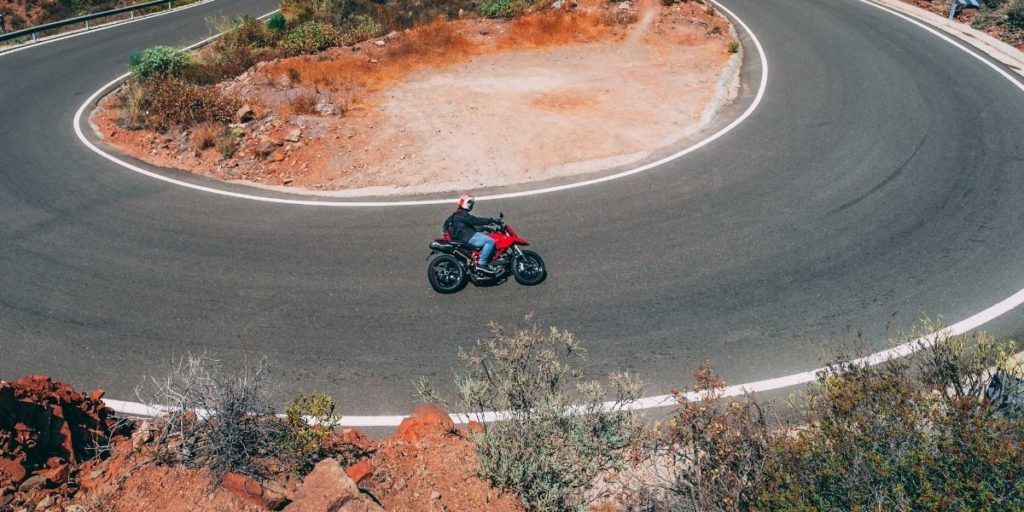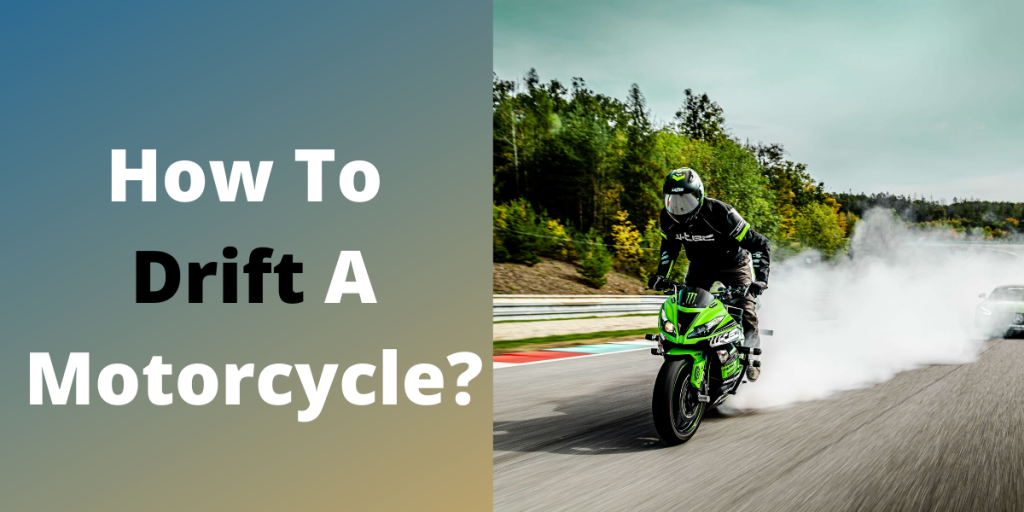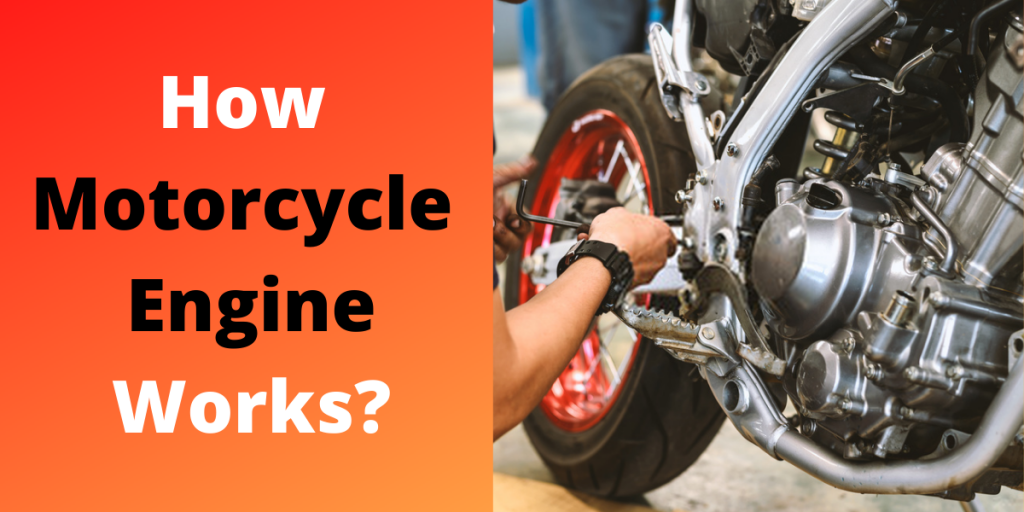Every motorcycle fan aspires to learn the art of destroying corners one by one while being in complete control. Riders, on the other hand, frequently make fundamental errors that drastically slow them down in turns. Riding fast and staying in control, especially in those tight curves, takes time to learn, and there’s no alternative for those long hours in the saddle. However, there are several fundamentals you can include in your riding style, and they will begin to show in the way you ride almost immediately. You may then improve your control over the motorbike to slice through those curves even faster once you’ve mastered these fundamental skills. Here are five basic yet effective riding methods that can help you move quickly around turns on a motorbike and make you a more confident rider to give you the confidence you need.
When driving, your main priority should always be safety. However, you may still have a lot of fun on a curvy B-road without endangering your life by doing so recklessly.
Some of the concepts of cornering on a track are carried over to the road, although they are used in a more conservative manner. For example, on the road and on the track, it is good practice to shift your body weight to the inside of the bike, but there is no need to get your elbow down on the everyday commute.
Finding a quiet country road with a bend in it is an excellent place to learn safe riding techniques. When traveling at 45mph, a 90-degree curve is good since it keeps things simple. Choose two or three safe U-turn locations so that you can go around the corner a few times without being hurt.
1. Take a look forward to where you want to be.
It’s such a basic concept that stating it almost seems silly. Despite this, most rookies and even intermediate riders make this error virtually all of the time. However, looking ahead does not always imply gazing a few meters ahead of your motorcycle’s front wheel. You must look a long way ahead and carefully consider where you want to park your motorcycle. And this process of scanning and gazing far ahead must be continuous, in sync with your motorcycle’s pace. It’s one of the most fundamental rules of motorcycle riding.
Your body, in its strange ways, follows the direction of your gaze and places the bike where you are looking. It may appear strange to some, but it’s a highly efficient method that seasoned riders can attest to. So, get used to it right away if you’re not used to looking far ahead on the road where you want to park your motorbike, especially around corners. You’ll be amazed at how much easier it is to negotiate a turn and how much faster you are. This is also why it is recommended that you should not stare at a barrier or a surprise on the road that you want to avoid. It’s known as target fixation: if you gaze at the barrier you’re trying to avoid, you’ll almost always end up smashing into it. We cannot emphasize enough how, despite the fact that this approach appears to be the “obvious and only way,” a surprising percentage of riders fail to use it. Start looking far ahead to where you want to put the motorbike on the road, and you’ll quickly discover you’ve added a very useful skill to your riding repertoire.
2. Pull the inner bar inward.
Yes, you read that correctly. Push the handlebar on the side of the bike you want to turn. To take a left-hander, bend over and push the left handlebar; to take a right-hander, do the same. Isn’t that ridiculous? Counter-steering is a perplexing topic for a good reason. Your bike’s wheel is really rotated extremely minutely in the opposite direction of the turn while riding through corners at medium to rapid speeds. By pressing the inner handlebar, you may make the bike take a tighter arc while cornering. As a result, even if the curve is tighter, you’ll be able to get around it faster. If you haven’t tried this approach yet, you should immediately do so, and you’ll be amazed at how successful it is.
3. Keep it loose and easy.
You must be fluid and flexible while riding a motorbike and shift your weight around it without abrupt motions. The smoothness with which you move your weight from side to side without disturbing the motorbike affects your speed through curves. When it comes to bodily parts, in particular, you should strive to make your hands as stress-free and light as possible. It’s not a good idea to lock your elbows or tighten up your shoulders at the elbow joints. In general, it’s a talent that develops with time as you rack thousands of kilometers on that saddle. However, suppose you attempt to maintain yourself light and flexible at the handlebars and pay attention to the fluidity of your body motions as you transfer your body weight around bends. In that case, you’ll find that it rapidly becomes second nature. If you pay attention to being fluid when in the saddle, you’ll be able to improve your bike handling by many notches.
4. The brake, the gear, and the throttle
Another part of being smooth is your cleanliness with throttle position, brakes, and gear shifts when going through corners. Sure, when you’re out on a long ride, and you’re on the street, you don’t know the exact curvature of the turn ahead of you. As a result, it’s a good idea to practice this ability on roads and turns you’re acquainted with. The optimum approach to negotiating a turn as smoothly as possible is to complete your braking and gear shifts before entering the bend. Once you’ve dipped the motorbike in, a steady, smooth throttle input with only a very small modulation should get you to the apex, where you may start breaking up the throttle to accelerate out. Now, how late you can brake, what speed and gear you bring into the turn, and how well your body controls the direction of the bike through a corner are all factors that will help you go through the corner faster. So learn to brake late and grasp the best gears for your bike at different speeds. Once you start paying attention to these details, you’ll notice that you’ll be smoother and faster around the turns. Advanced riders, especially on a racetrack, may actually continue their front brakes into a bend. However, such abilities are used at a different level, and for the sake of the fundamental approaches we’re addressing, the ideas described above should be quite helpful.
5. Make sure the knees and balls of your feet are in the proper posture.
It has already been noted that you should do weight transfer on a motorbike in a fluid and seamless way. In order to make this easier, you should practice foot positioning on the bike so that you can easily raise yourself up and move from side to side without causing the motorbike to become unstable. Weight transfer should not be accomplished through the use of the handlebars; instead, utilize the footpegs and leverage your legs to do this. Setting your toes on the footpegs is a smart concept that works for the majority of riders; nevertheless, you should continue to experiment until you discover your individual sweet spot. Second, as previously indicated, you should keep the tension on your arms and hands to a bare minimum. However, as you might expect, it’s difficult to keep your hands from being strained while braking hard and quickly. The solution, in this case, is to securely grasp the tank with your knees in order to brace for extreme deceleration. Your knees also assist you in maintaining your grip on the bike when you lean off of it with reassurance. When you make a study contact, press the outside of your leg on the gasoline tank. Specifically, for this reason, the knee recesses on sportbikes have been designed.
Final Words:
Of course, there are more complex ways that can assist you in traveling even quicker around corners. However, for those of you who are at the beginning to intermediate level of riding skills, the following five suggestions will go a long way toward making you a more proficient rider who can accelerate and corner with authority. Please share your opinions on the topic, as well as the strategies that you employ to achieve higher speeds and more control around turns, in the comments box provided below. Would you please forward this article to any of your friends who might find it interesting? Ride with caution!



